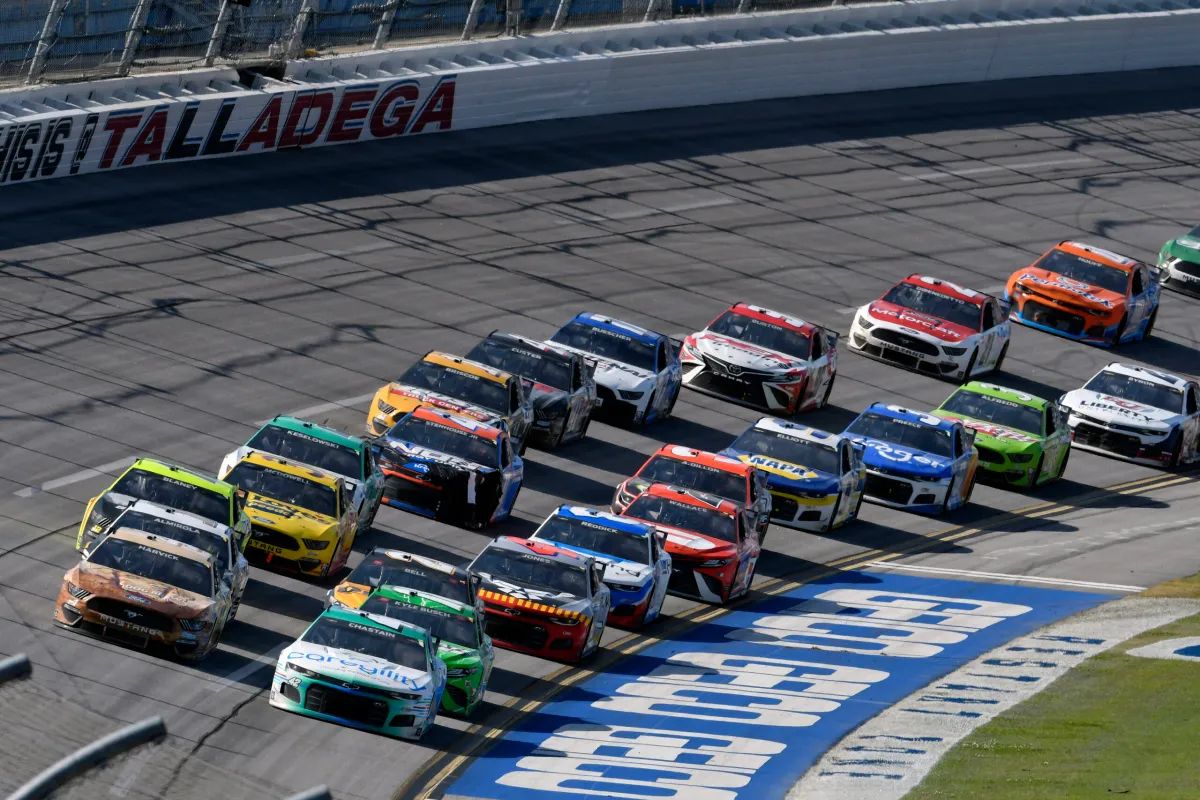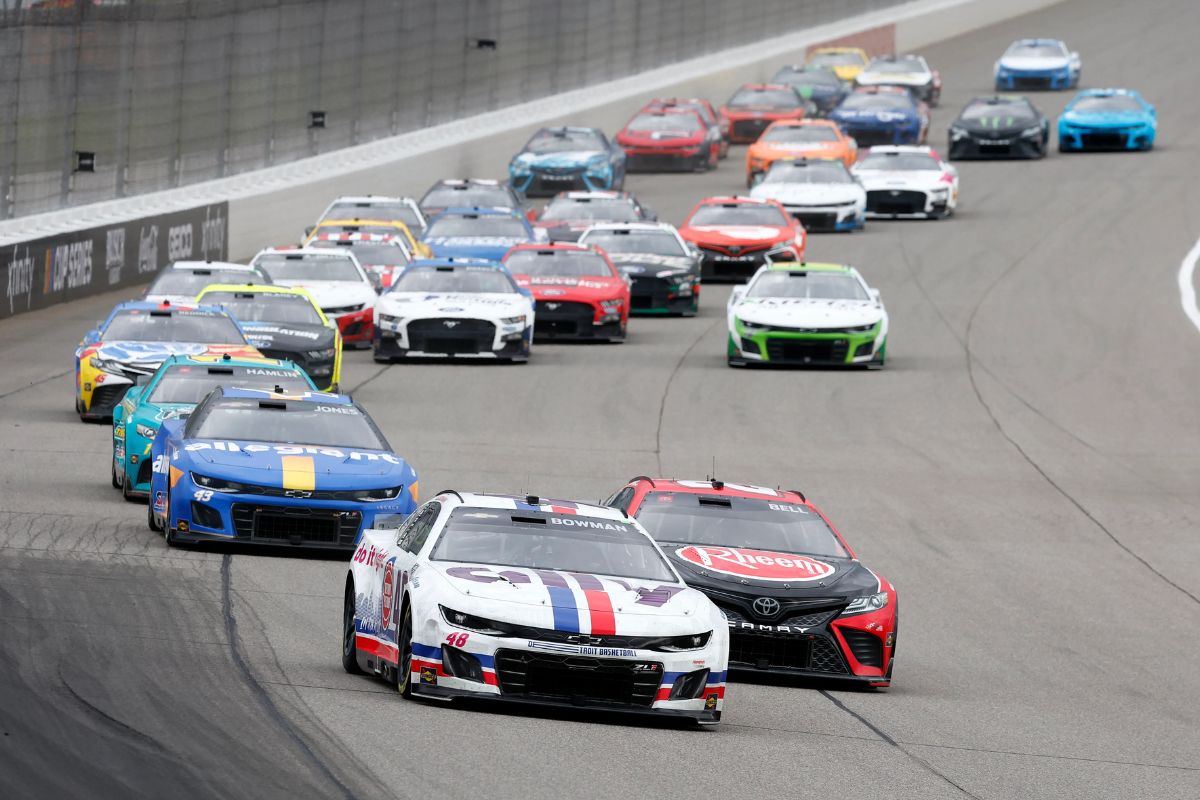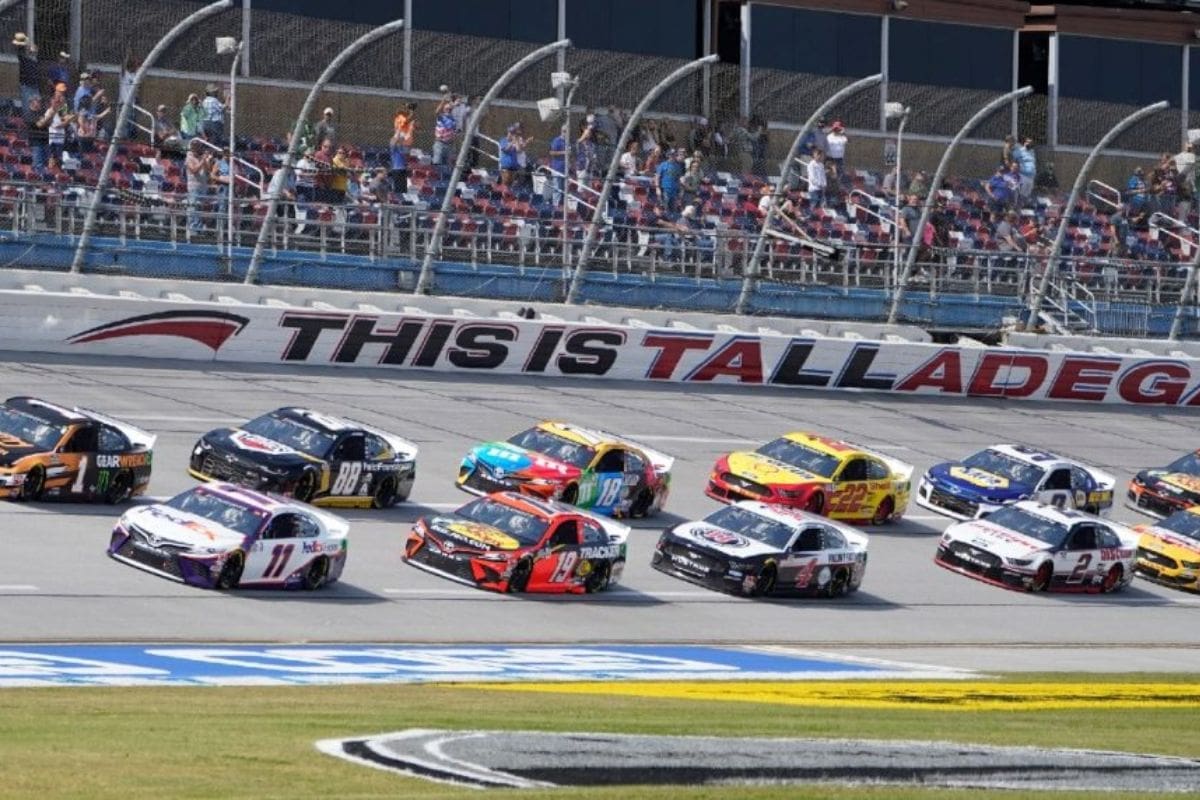NASCAR Eyes Upgrade to Superspeedway Package: As NASCAR navigates the complexities of high-speed racing, its commitment to enhancing safety within the Superspeedway package has become increasingly essential. Recent incidents have prompted a thorough reassessment of existing protocols, leading to potential adjustments in aerodynamic designs and horsepower regulation. This proactive approach aims to protect drivers and seeks to preserve the thrilling nature of the sport. Yet, as these upgrades unfold, questions arise regarding their effectiveness and the balance between safety and competition. What implications might these changes have for the future of NASCAR?
Key Highlights
- NASCAR is committed to refining the Superspeedway package to enhance both competition and driver safety following recent chaotic races.
- Upgrades include adjustments to rear spoilers and introducing air ducts to improve airflow and reduce racing chaos.
- The current package features a 510-horsepower setup with a 7-inch spoiler, maintaining speeds below 200 mph to mitigate risks.
- Safety initiatives, such as the right-side shark fin, aim to reduce blow-over crash risks but require further evaluation for effectiveness.
- Continuous monitoring and collaboration with experts are essential to implement advanced materials and stricter safety protocols for future enhancements.
Daytona Race Highlights and NASCAR’s Superspeedway Package
In NASCAR racing, few events evoke as much excitement as the Daytona race, which displayed the thrilling capabilities of the newly upgraded Superspeedway package. This year’s race was a masterclass in the delicate interplay of speed, strategy, and safety, culminating in an unexpected victory for Harrison Burton, who edged out two-time NASCAR Cup Series champion Kyle Busch in a breathtaking final lap.
The Daytona event was marked by intense drama, including cars flying off the track, multiple instances of fire, and chaotic last-minute wrecks that kept fans on the edge of their seats. Such high-octane action highlights the inherent risks of superspeedway racing, illustrating the necessity for a balanced package that improves both competition and safety.
While the upgraded Superspeedway package did succeed in delivering a thrilling spectacle, questions remain regarding its effectiveness in ensuring driver safety amidst the chaos. The balance NASCAR seeks is evident in the design’s focus on reducing aerodynamic instability, which has historically led to multi-car pileups.
NASCAR’s Efforts to Improve Superspeedway Packages
NASCAR’s commitment to improving the superspeedway racing experience is evident in its continuous efforts to refine competition packages. By tactically adjusting elements such as engine specifications and aerodynamic features, NASCAR aims to create a thrilling yet safe environment for drivers and fans similarly.
In 2017, NASCAR experimented with integrating Xfinity Series engines into Cup cars to foster a better drafting effect. This initiative not only brought excitement to the races but also sought to mitigate chaos, which can often arise on superspeedways. Furthermore, modifications like rear spoiler adjustments and the introduction of air ducts were implemented to mimic truck airflow, further improving the racing spectacle.
As NASCAR looks to the future, its ongoing refinements to the superspeedway package will be especially important ahead of high-stakes races at venues like Talladega and Atlanta. The focus remains steadfast on achieving a prime balance between competitive excitement and driver safety.
| Component | Adjustment Type |
|---|---|
| Engine Type | Xfinity Series Engines |
| Aerodynamics | Rear Spoiler Modification |
| Airflow Dynamics | Addition of Air Ducts |
| Race Strategy | Improved Drafting Effect |
Through these progressive changes, NASCAR remains dedicated to fostering an exhilarating racing atmosphere while prioritizing the well-being of its competitors. The evolution of the superspeedway package is an ongoing expedition, reflecting NASCAR’s responsiveness to the ever-changing dynamics of motorsport.
Evaluation of the Current Superspeedway Package
Amid ongoing discussions regarding the effectiveness of the current superspeedway package, the balance between safety and excitement remains a focal point for analysis. Introduced to improve safety at iconic tracks such as Daytona and Talladega, the current package centers around a 510-horsepower aero setup complemented by a 7-inch spoiler. This configuration has effectively curtailed speeds, consistently keeping them below the 200 mph threshold, thereby mitigating the risks associated with high-velocity racing.
However, while prioritizing driver safety, the tightly packed racing that ensues can diminish the thrill traditionally associated with superspeedway events. This dichotomy was emphasized during the recent Coke Zero Sugar 400, where moments of exhilaration emerged despite the overarching safety measures. Incidents involving drivers like Michael McDowell and Josh Berry, which saw cars airborne, highlighted the inherent unpredictability of racing at such elevated stakes.
Fortunately, NASCAR’s rigorous safety protocols guaranteed that these chaotic moments resulted in no injuries, reinforcing the effectiveness of their safety initiatives.
The current package, while successful in its primary aim of reducing potential harm, invites scrutiny regarding its impact on race dynamics. The excitement derived from close finishes and tactical overtaking is undeniably affected by the restrictive nature of the aerodynamic specifications.
NASCAR Analyst Eric Estepp’s Suggestions
The discourse surrounding the current superspeedway package has prompted insights from industry experts, particularly NASCAR analyst Eric Estepp. In light of recent performances at venues like Daytona, Estepp has suggested that NASCAR consider notable modifications to the cars, specifically advocating for the removal of the underbody wing at superspeedway events. This proposal stems from a desire to improve both racing dynamics and safety, especially with the next Atlanta race looming in just two weeks.
“Maybe NASCAR will finally decide to rip the underbody the underwing off these cars at least at Superspeedways maybe they’ll consider something before Atlanta and then Talladega in the fall I guess we’ll have to wait and see.” – Estepp
Estepp’s insights reflect a broader call for NASCAR to act swiftly and decisively in response to safety concerns, drawing parallels to the rapid implementation of the shark fin on cars. Estepp’s commentary highlights a crucial aspect of NASCAR’s operational ethos: the need for adaptability. He expressed optimism that the governing body could replicate the quick action taken with the shark fin by making further adjustments to the superspeedway package.
“They made the decision to add the shark fin really quick so who knows maybe this (superspeedway package) is an area where they can work fast.” – Estepp
As NASCAR gears up for critical races, Estepp’s recommendations serve as a bellwether for potential changes that could redefine the racing experience. By prioritizing safety while maintaining competitive integrity, NASCAR can set a precedent for innovation in the sport, ensuring that both drivers and fans remain engaged and secure.
NASCAR’s Safety Feature and Its Effectiveness
A considerable focus within the NASCAR community has been the effectiveness of recently introduced safety features, particularly the right-side shark fin intended to mitigate the risk of blow-over crashes at superspeedway events.
Despite its intent to improve safety, the feature has faced scrutiny following several incidents. Particularly, while it helped Michael McDowell avoid a catastrophic rollover, it failed to prevent Josh Berry from flipping during a race, raising questions about its general efficacy.
“So, when we add say the roof flaps or the hood flaps, the shark fin on the left side, the roof rails, those are all added to make the velocity at which the car will lift off the ground higher, and when you look at how fast our cars go, they actually go faster than a 747 at takeoff.” – Estepp
The analysis reveals three critical points regarding the shark fin’s performance:
- Aerodynamic Limitations: The intended design aimed to increase the velocity threshold required for a car to lift off the ground. However, as indicated by Chief Racing Development Officer John Probst, the challenge lies in the high speeds of NASCAR vehicles, which can exceed those of a 747 during takeoff.
- Mixed Results: The varied outcomes from different races indicate that while some drivers benefit from the shark fin, others experience considerable safety risks. Estepp noted that the adjustments made may not have had the desired impact, suggesting further refinement is necessary.
- Future Improvements Required: The current safety measures, while beneficial, need further modifications to guarantee driver protection and competitive performance.
“Clearly whatever Arrow changes they made for this race did not have the desired effect, so again, back to the drawing board, that’s all I can really say I’m no I’m no genius here I did talk to someone this weekend who is an aerodynamic engine and to be fair they did tell me that the shark fin probably wasn’t going to work.” – Estepp
The community must engage in a continuous dialogue about potential enhancements to the superspeedway package.
Ultimately, while NASCAR’s safety initiatives show promise, ongoing evaluations and adjustments are crucial to achieving the desired outcomes.

News in Brief: NASCAR Eyes Upgrade to Superspeedway Package
NASCAR’s commitment to enhancing the Superspeedway package emphasizes the organization’s proactive approach to driver safety and competitive integrity. By refining aerodynamic features and adjusting horsepower levels, the initiative aims to mitigate risks associated with high-speed racing. Continuous evaluation and expert collaboration will be essential in implementing these upgrades effectively. As NASCAR prepares for future events, prioritizing safety while preserving the excitement of the sport represents a significant step forward in the evolution of motorsport.
ALSO READ: Milwaukee Mile’s 2025 Debut Derailed: NASCAR Confronts Penske’s Latest Move



